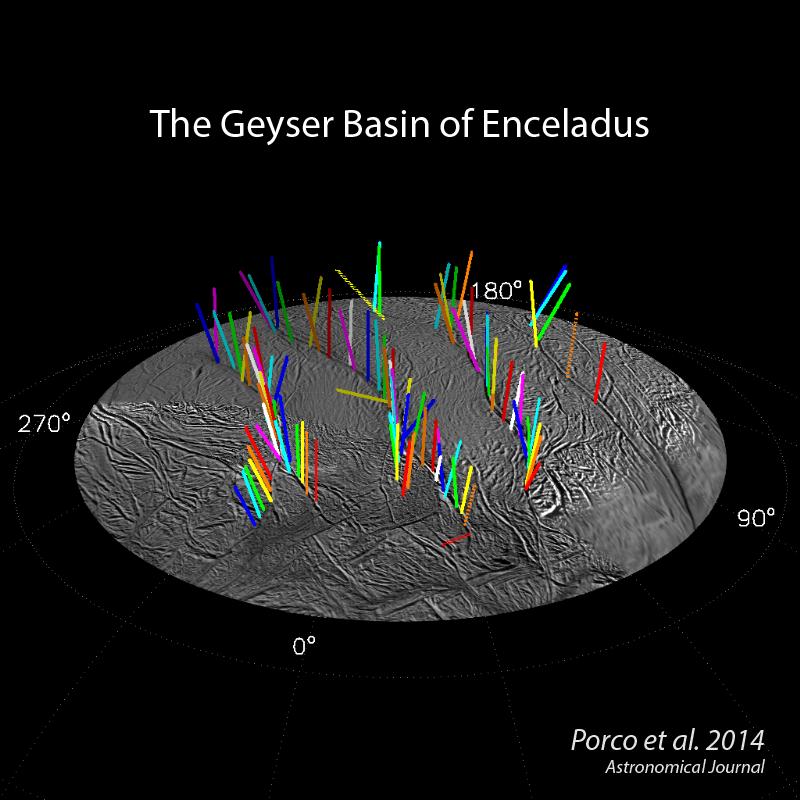Geysers Galore on Enceladus
July 30, 2014
Geysers in the solar polar region of Saturn’s moon Enceladus are actually fountains erupting from an underground ocean of liquid water, according to a new study by scientists working with the Cassini space probe. The discovery solves a 10-year puzzle about the source of the geysers, which shoot water vapor and tiny particles of ice hundreds of kilometers into space. Discovered by Cassini in 2005, the geysers erupt from four “tiger-stripe” fractures, each of which is some 80 miles (130 kilometers) long and 1 1/2 miles (2.4 kilometers) wide. Cassini scientists confirmed the existence of the ocean in 2013.

Plumes of ice particles and water vapor erupt from Enceladus in a false-color image taken by Cassini. Some of the particles become part of one of Saturn's rings. (NASA/JPL/Space Science Institute)
Heat-detection equipment on Cassini had found that the fractures were warmer than the surrounding terrain. Some scientists had theorized that heat created as the sides of the fractures rubbed against one another under Saturn’s gravitational pull was producing the geysers. The new study has revealed that the geysers are actually producing the surface heat by transporting water vapor and water droplets from deep inside the moon. As the water vapor condenses near the surface, it also releases heat. The excess heat causes the water to erupt in geysers. Buried beneath about 20 miles (32 kilometers) of surface ice, the sea is centered on the moon’s south pole, though it may extend much farther around the moon.

The "tiger-stripe" fractures from which the geysers erupt score a basin surrounding Enceladus's south pole. (NASA/JPL-Caltech/SSI)

Geysers appear as colored bars in a three-dimensional model of Enceladus's south polar region. (ASA/JPL-Caltech/Space Science Institute)
Additional World Book articles:
- Cassini, Giovanni Domenico
- Satellite
- Space exploration
- Close Encounters with Saturn (a Special Report)
- Probing the Planets (a Special Report)


